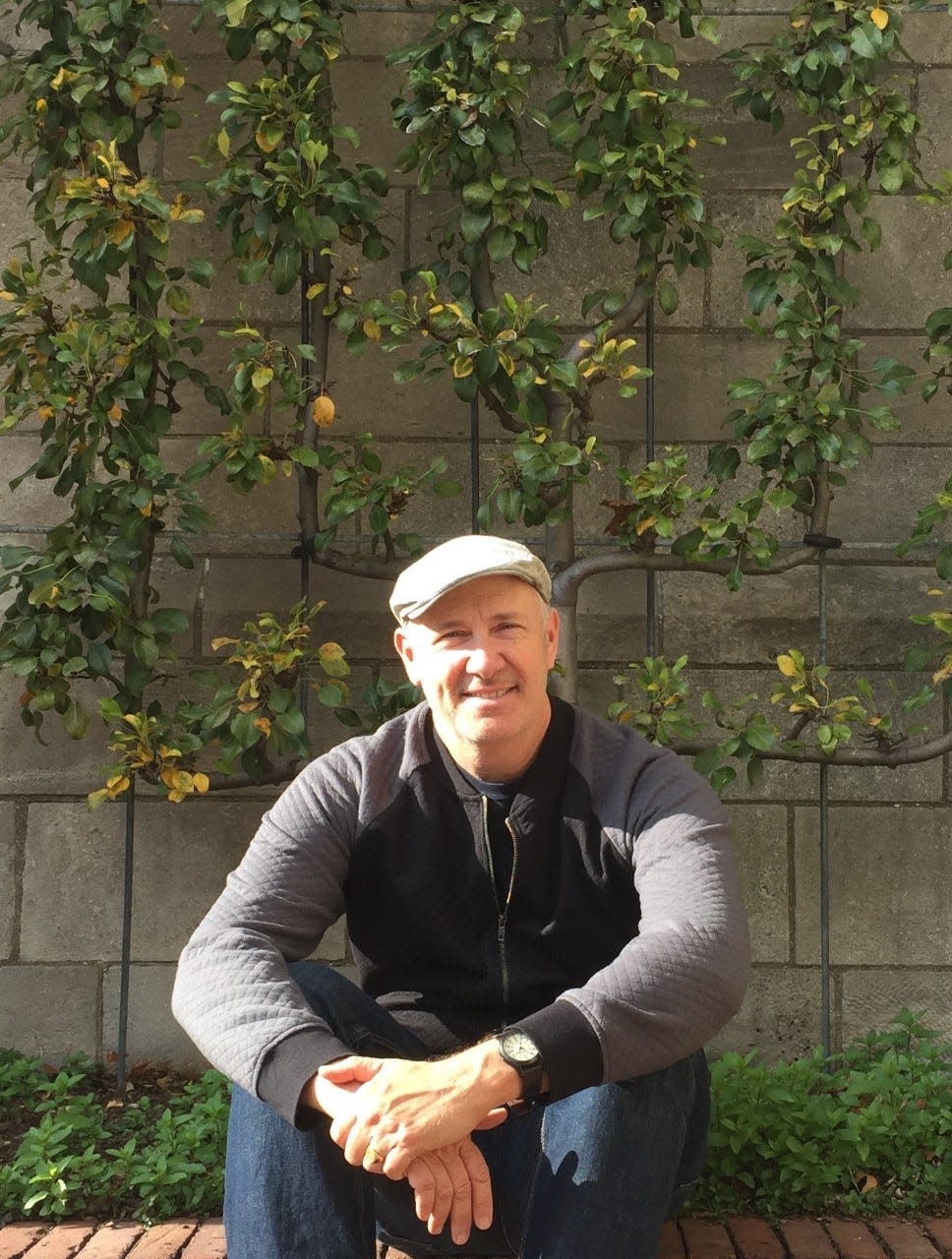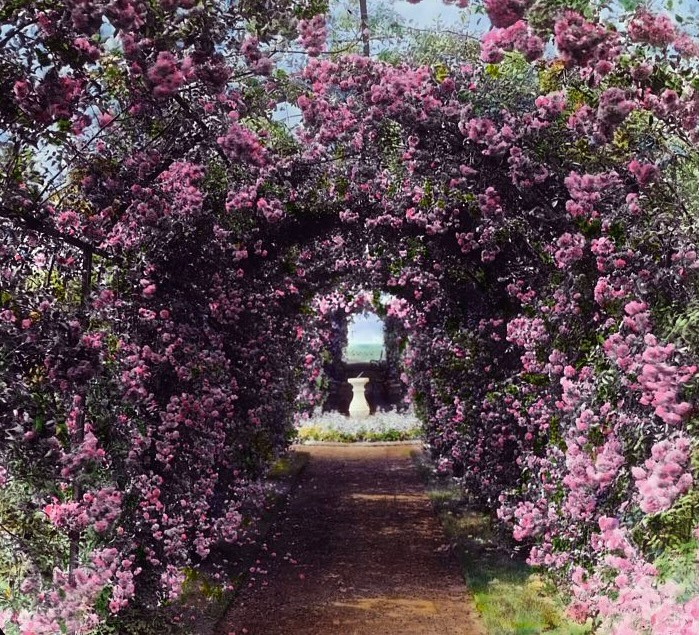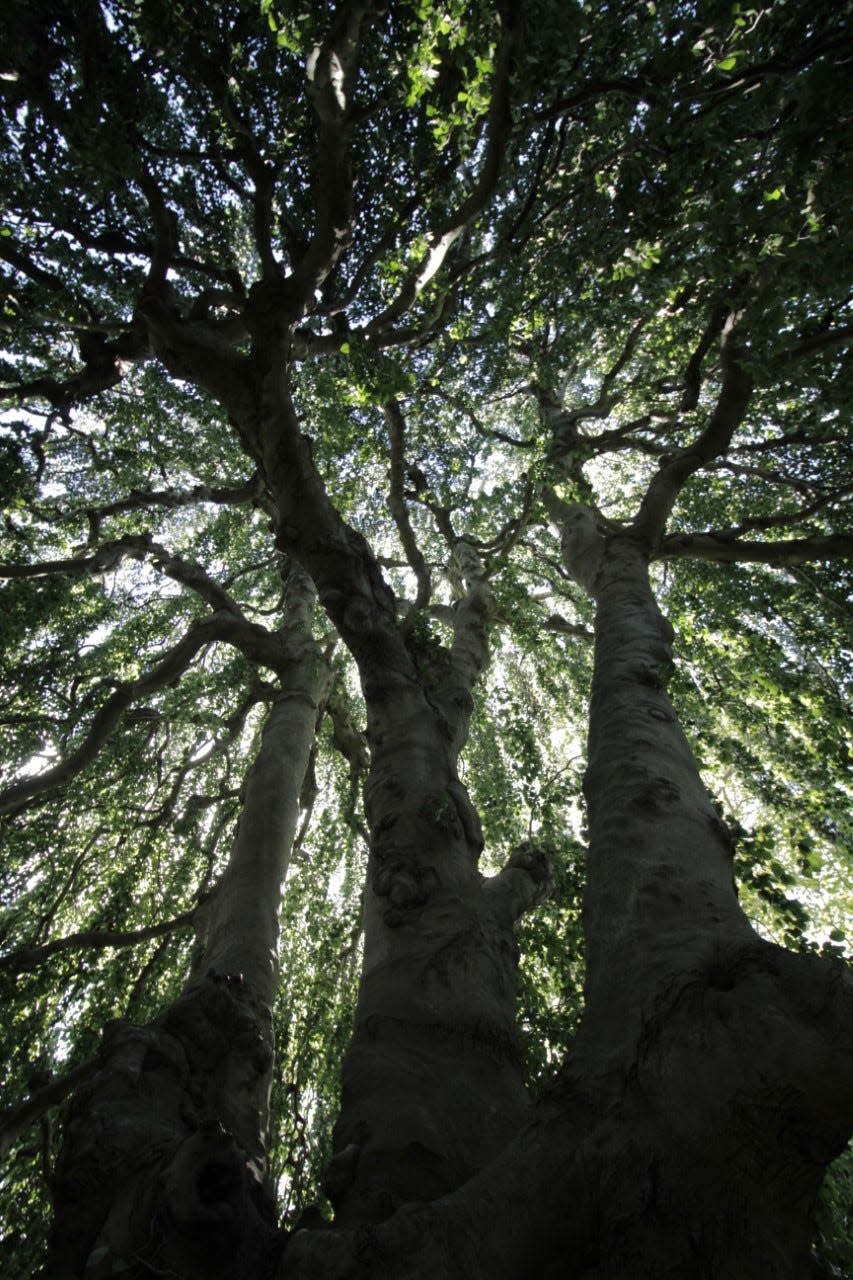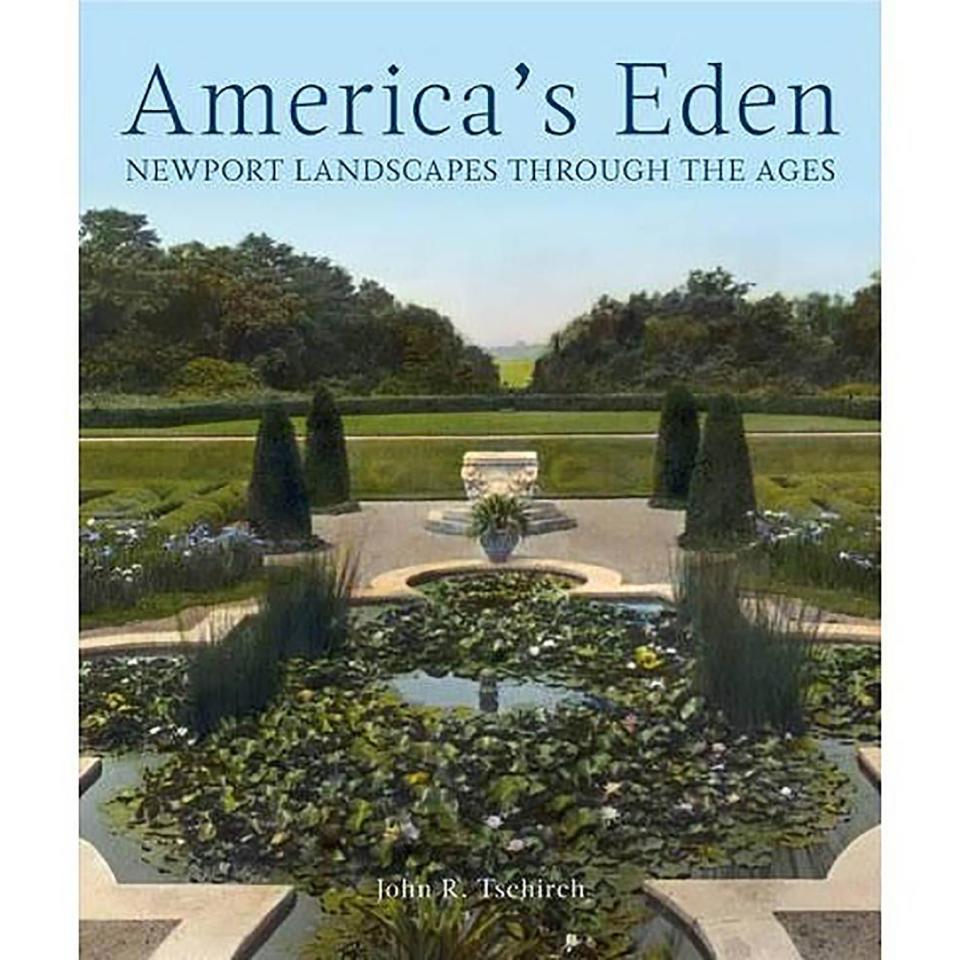Architectural historian centers talk on 'America’s Eden'

- Oops!Something went wrong.Please try again later.
Newport, Rhode Island, is a popular summer place for Palm Beachers, and on Jan. 12 at the Society of the Four Arts, architectural historian John Tschirch presented a detailed look at four centuries of Newport’s art, history, design and horticulture.
The Garden Club of Palm Beach arranged the lecture by Tschirch, whose latest books include “America’s Eden: Newport Landscapes through the Ages,” and “Newport: The Artful City.” Both are on sale at Classic Bookshop, 310 S. County Road.
Kate Gubelmann, a garden club board member and co-chairman of programs, is a Newport summer resident and was among the first to encourage him many years ago to conduct landscape research to guide the preservation of the city's green spaces, particularly the gardens of its famed historic cottages.
More: 'Fresher, and better': Chinese Garden restored at Society of the Four Arts in Palm Beach
More: Petraeus: Russia and Ukraine will agree to negotiated resolution of war
“Each historic house has a story to tell, and so does its garden,” Gubelmann said. “We have a lot of fun uncovering these tales.”
The “America’s Eden” title originated in 1789 when Jedidiah Morse described Newport as the “Eden of America” in the "First Geography of the United States," Tschirch said. Morse described Newport’s climate as healthful and its women as beautiful.
“Kate said if we are going to restore or preserve, we have to know what came before,” Tschirch said. “My one challenge was that there was such an embarrassment of riches in Newport. Where would I begin and where would I stop and what would make it into the book?” Tschirch said.

Newport’s landscape, considered of national significance, has been created through the centuries by landscape architects, homeowners and gardeners. Writers, artists and photographers have mythologized it through art and literature.
Tschirch showed a series of photos of rare period maps, paintings, photographs and landscape planning documents that tell Newport’s story.
“It is a town known for its natural scenery, for designed landscapes. But you can’t divorce the built environment from the natural environment,” Tschirch said.
The seaside city has a northern climate, but it faces south, so it is warmed by the Gulf Stream. That allows a wide variety of trees and plants to grow there.
The city is known for its large stone outcroppings called glacial erratics, left over from the Ice Age. Its striking cliffs and famous Cliff Walk along its eastern shore have inspired authors such as Edith Wharton, who had an estate there called Land’s End. Harriet Beecher Stowe’s novel, “The Minister’s Wooing“ was set in Newport. Henry James, who summered in Newport, wrote “The Sense of Newport,” and expressed his love of the city by the sea and his distaste for its development as a playground for the super-rich of the Gilded Age.
Newport features 11 mansions under the stewardship of the Preservation Society of Newport County that can be visited today. Among them are Vanderbilt family’s summer “cottages” The Breakers, built in 1895 and the grandest of Newport’s summer “cottages,” and Marble House, built in 1892.
There also is Chateau-sur-Mer, which was completed in 1852 for China trade merchant William Shepard Wetmore. The chateau is known for its weeping beech tree, which is still there, Tschirch said. Other beech trees that thrive in Newport’s evening mist include the fernleaf beech, copper beech and common green beech.

In the Victorian Age, the landscapes began to include more plant varieties as steamships and trains became faster.
“Exotics began to make their way into gardens,” Tschirch said. “The fern was the new plant of the Victorian Age. It was imported in great quantities.”
One of Newport’s most significant historic buildings is the Redwood Library, which has been operating in the same location since 1747. It is home to a fernleaf beech, dating from 1835.
Well-known landscape architect Frederick Law Olmsted, Sr., who died 1913, is recognized as the founder of American landscape architecture and is considered the nation’s foremost park designer. He designed numerous private and public projects in Newport. His sons Frederick Jr. and John C. continued his work there under their firm Olmsted Brothers.
Olmsted was an environmentalist who used indigenous plants because he knew they were tough, Tschirch said.
Other Newport area landmarks Tschirch highlights in “America’s Eden: Newport Landscapes Through the Age Newport Landscapes through the Ages," include Purgatory Chasm, a 12-foot-long fissure in neighboring Middletown, Beacon Rock at Newport Harbor and Stone Tower in Touro Park.
Even today the Stone Tower is a source of mystery, and no documentation about its construction or original use has been found. Tschirch said it was most likely a windmill or a corn grinding station.

A legend arose that the 28-foot tower was Newport’s version of Stonehenge and was built by Viking explorers, but that isn’t true, Tschirch said.
Newport is known for its legendary trees. Its first “Liberty Tree," was a buttonwood planted in the 1700s. It served as a gathering place for free and enslaved African Americans to meet and elect their unofficial governor or king. Today, the fourth liberty tree, a fernleaf beech, stands in its place.
As for the future of the trees, Tschirch said there is hope. A group of Newport high school students are taking specimens of all the trees in Newport, and just propagated the library’s fernleaf beech.
“This city does live like a living case study of landscapes and as a way we as Americans have shaped our world,” Tschirch said.
In addition to serving as a consultant on historic houses and landscapes, Tschirch is an instructor in design history at the Rhode Island School of Design.
His 30-year career in the preservation and study of historic landmarks and landscapes has led him on treks to French chateaux, English castles, Italian villas, Austrian palaces, Croatian fortresses, Argentinian mansions and the Gilded Age's houses of America.
This article originally appeared on Palm Beach Daily News: 'America’s Eden' takes centerstage at Four Arts talk

